Best Free Pest Recognition Datasets Online
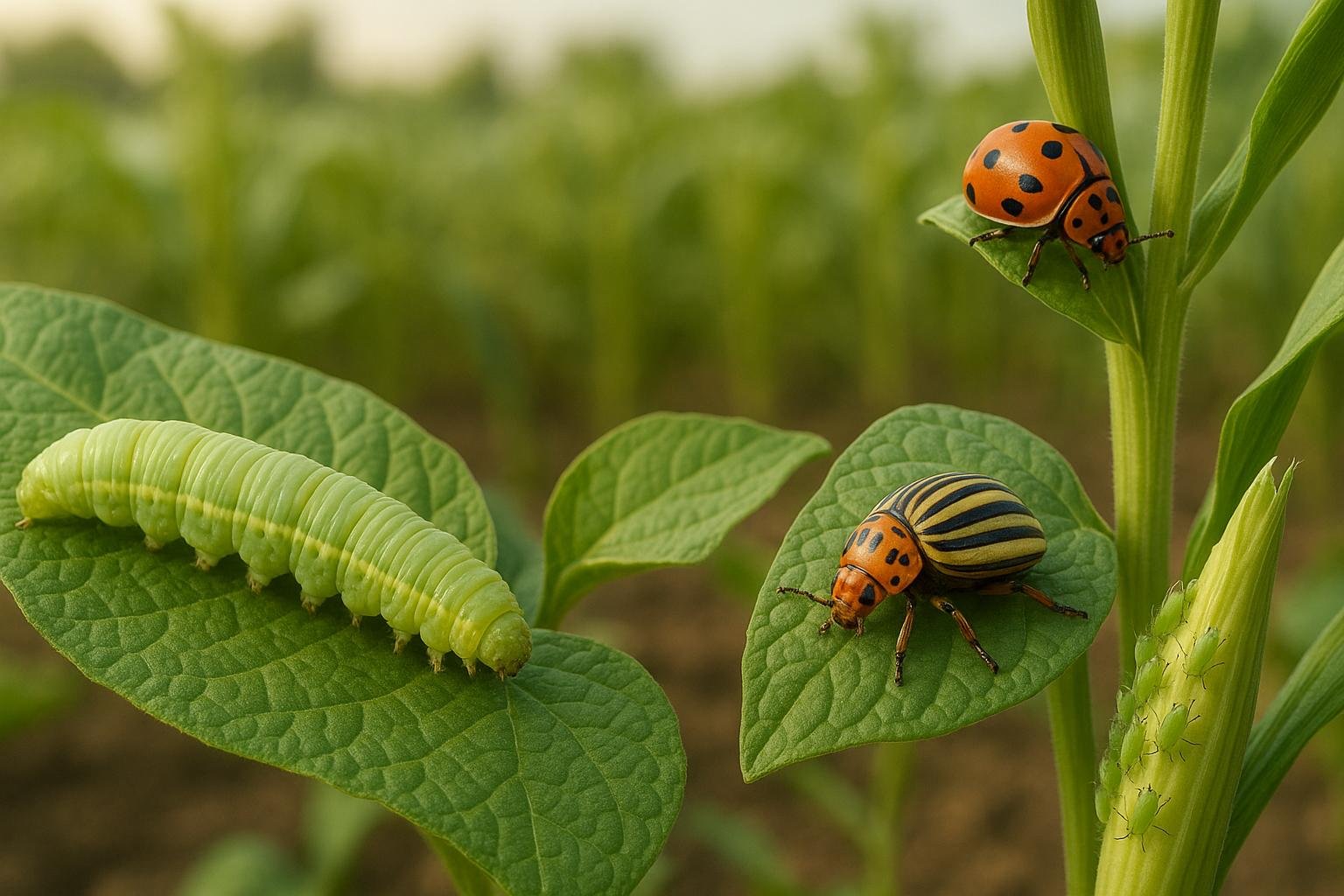
Pests destroy up to 40% of global crops annually, costing over $290 billion. AI tools trained on free pest datasets can identify pests with 90%+ accuracy, compared to 60-70% by humans. These datasets are essential for gardeners, farmers, and researchers to tackle pest issues faster and smarter.
Top Free Pest Datasets:
- Kaggle Pest Dataset: Thousands of pest images, great for diverse AI projects.
- EPPO Global Database: Covers 97,800+ species, with 15,000 pest images.
- Forestry Pest Dataset: Focused on forest pests, with 7,163 images.
- CropPest DSS Data: Combines pest data with weather patterns for predictions.
Quick Comparison:
| Dataset Name | Images | Pest Species | Focus |
|---|---|---|---|
| Kaggle Pest Dataset | Thousands | Many | General pests |
| EPPO Global Database | 15,000+ | 1,900+ | Global agriculture |
| Forestry Pest Dataset | 7,163 | 31 | Forest pests |
| CropPest DSS Data | N/A | N/A | Predictive modeling |
These datasets power AI-driven tools like AIGardenPlanner, providing gardeners with pest management advice tailored to local conditions. Whether you're growing crops or simply tending to a garden, these resources can save time, reduce pesticide use, and improve results.
Insect-Foundation: A Foundation Model and Large-scale 1M Dataset for Visual Insect Understanding

How to Choose Pest Recognition Datasets
Choosing the right pest recognition dataset is a game-changer for your AI model's success. According to IBM CEO Arvind Krishna, nearly 80% of an AI project involves collecting, cleaning, and preparing data [4]. Making smart choices early on can save countless hours and ensure your model performs well in real-world pest identification scenarios. Here's a breakdown of what sets top-tier datasets apart from the rest.
Dataset Size and Variety
Size matters, but variety is the real key. For deep learning models focused on image classification, you'll need at least 1,000 labeled images for each pest category. Ideally, your training dataset should include ten times more samples than the model's parameters [4]. For highly complex models, this can mean up to 10 million labeled items. Beyond sheer numbers, the dataset must include diverse examples to avoid biases. This ensures your model can recognize pests across different life stages - eggs, larvae, pupae, and adults - each with distinct visual traits. Take the IP102 dataset as an example: it features 102 pest types and 75,222 images [3], offering the variety needed to distinguish between similar species. If you're dealing with limited data, techniques like data augmentation can help fill the gaps [3].
Label Quality and Data Details
Even the largest datasets can fail if the labels are inaccurate. Your AI model's reliability hinges on the quality of the ground truth labels used during preparation [6]. Ideally, labeling should be done by experts like entomologists or seasoned agricultural professionals to ensure precision and consistency [5]. Look for datasets that go beyond basic species identification. Detailed metadata - such as pest damage patterns, host plants, geographic distribution, and seasonal activity - adds depth to your model's training. High-quality datasets follow strict labeling guidelines, use trained labelers, and implement validation steps to maintain accuracy [6].
Location Focus and Access
Geographic relevance is another critical factor. Pest species, populations, and life cycles vary widely across regions in the U.S. A dataset focused on European agricultural pests won't be much help to a corn farmer in the Midwest or a vineyard manager in California. While less than 1% of insect species are harmful [7], the harmful ones differ dramatically by region. Location-specific datasets enable your AI model to differentiate between pests and beneficial insects in your area, leading to more precise and eco-friendly pest management solutions.
Access and licensing terms also play a role. Free datasets often come with restrictions on commercial use, redistribution, or modifications. Many of the best U.S.-specific datasets are produced by USDA research programs, state extension services, or university agricultural departments. For the most practical results, prioritize datasets that include images captured in real-world settings, such as fields or gardens, rather than just laboratory specimens. These real-world examples better reflect the conditions your AI model will encounter [8].
Best Free Pest Recognition Datasets
Finding the right dataset can make all the difference when it comes to pest recognition projects. These free resources each bring something unique to the table, offering everything from extensive species coverage to highly specialized collections. Whether you’re a researcher, developer, or agricultural expert, these datasets can help you tackle pest identification challenges effectively.
Kaggle Pest Dataset
Kaggle is a go-to platform for machine learning enthusiasts, and its pest recognition datasets are no exception. These collections often focus on agricultural pests, offering thousands of labeled images across a wide range of species. You’ll find common crop pests like aphids, caterpillars, and beetles, with images captured in both controlled settings and natural field conditions. What makes Kaggle stand out is its collaborative environment - detailed documentation, starter code, and active community discussions can help you get your project off the ground. Plus, most datasets come with permissive licenses, making them suitable for both research and commercial use.
EPPO Global Database
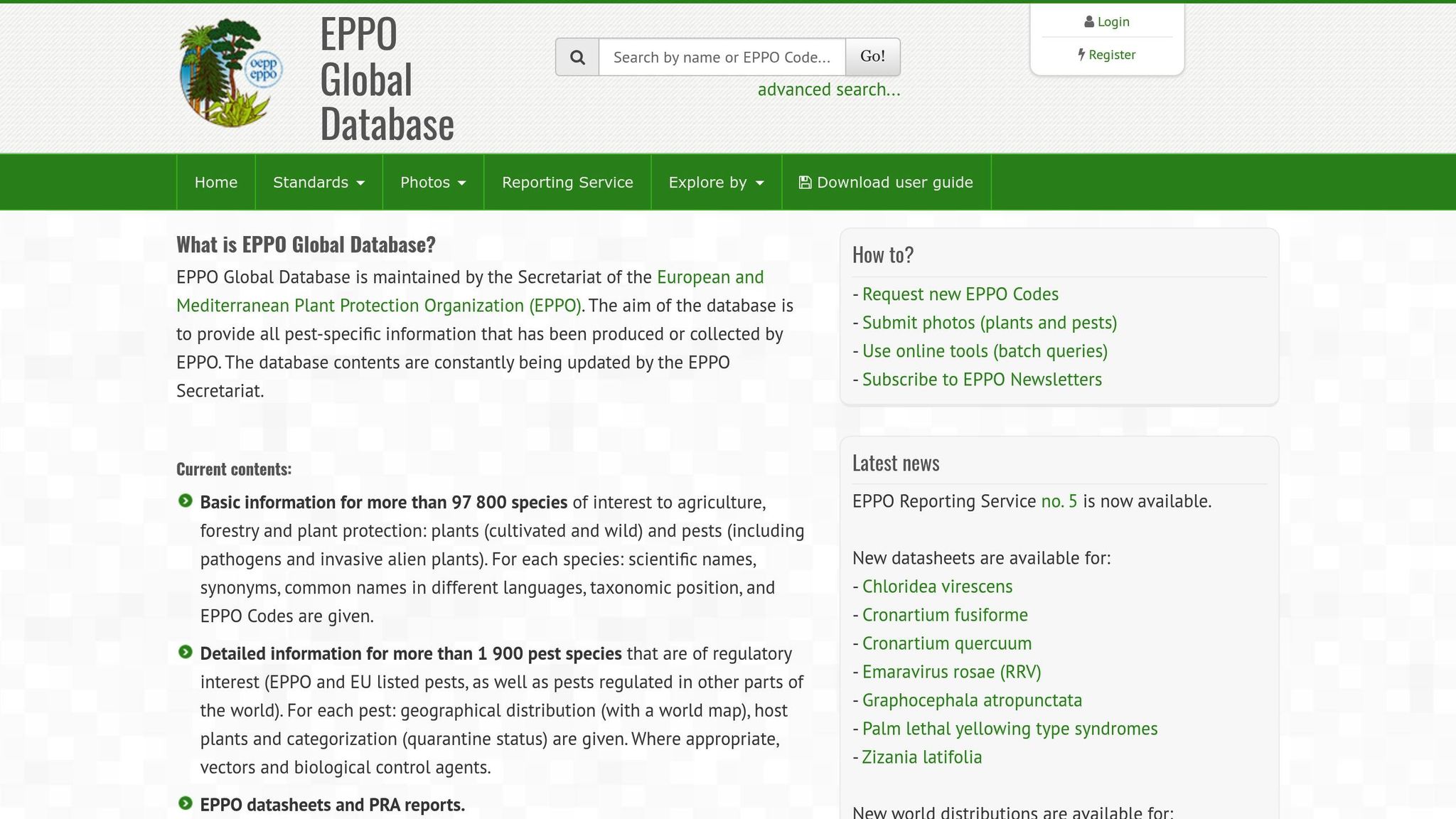
The European and Mediterranean Plant Protection Organization (EPPO) maintains one of the most extensive pest databases available. It includes basic information on over 97,800 species relevant to agriculture, forestry, and plant protection[10]. For more than 1,900 pest species of regulatory concern, the database provides additional details like geographical distribution maps, showing where these pests pose risks[10]. It also features over 15,000 images of plants and pests, which are invaluable for training computer vision models[10]. While rooted in Europe, the database’s global coverage makes it highly relevant for U.S.-based projects dealing with invasive species or international agricultural trade.
Forestry Pest Identification Dataset
This dataset is tailor-made for forest pest management, offering 7,163 images across 31 pest types and their various forms[9]. What sets it apart is its focus on multiple life stages and seasonal variations, providing a richer dataset than many others in the forestry domain. Validation studies have shown that it performs well with object detection algorithms like Faster RCNN, YOLOV4, SSD, and Deformable DETR, even with minimal training[9]. This makes it a great choice for advancing both research and practical pest detection applications in forestry.
CropPest DSS Historical Data
For those interested in predictive modeling, the CropPest Decision Support System dataset is a standout. It combines pest occurrence data with weather patterns and crop development stages, focusing on rice and cotton systems[11]. Unlike static image datasets, this resource enables AI systems to predict pest outbreaks by analyzing environmental conditions and historical trends. Field studies have validated the effectiveness of AI models trained on this data, making it a valuable tool for forecasting pest activity.
Each of these datasets has its own strengths, catering to different pest identification needs. Image-heavy datasets like the EPPO Global Database and Forestry Pest Identification Dataset are ideal for training computer vision models, while the time-series data from CropPest DSS is perfect for predictive analytics. The key is to align your project’s requirements with the dataset that best suits your goals.
sbb-itb-4d6a8dd
🚀 Ready to Reinvent Your Garden?
Join thousands of homeowners who have transformed their gardens using our AI design tool. Upload one photo to explore endless possibilities.
Get your AI garden designs →Dataset Comparison
When comparing pest recognition datasets, it's clear that they differ significantly in size, quality, geographic focus, and how well they address the needs of U.S. agricultural projects. Each dataset has its own strengths, and the best option depends on what you're aiming to achieve. Here's a closer look at these differences and their impact on model performance.
Size and scope are major factors to consider. The AP162 dataset stands out as the largest, offering 194,700 images across 162 pest categories[12]. By contrast, the IP102 dataset includes over 70,000 images featuring 102 common crop pests[9]. The Agripest dataset focuses on field crop pests, with more than 49,700 images spanning 14 categories[9]. Meanwhile, the Forestry Pest Identification Dataset is more niche, containing 7,163 images of 31 pest types[9].
| Dataset Name | Number of Images | Number of Pest Species | Primary Focus |
|---|---|---|---|
| AP162 | 194,700 | 162 | Agricultural pests |
| IP102 | 70,000+ | 102 | Common crop pests |
| Agripest | 49,700+ | 14 | Field crop pests |
| Forestry Pest Dataset | 7,163 | 31 | Forest pests |
Annotation quality is another critical factor. Poor annotations can severely limit how well a model performs[13]. For example, while IP102 is extensive, it struggles with issues like watermarks and incorrect labels. These challenges, including the costs and errors associated with labeling, directly impact the dataset's reliability[13]. Consistent image quality and accurate annotations are essential for improving model precision, but many datasets fall short in this area[13].
Geographic focus also plays a significant role in a dataset's usefulness. Pest populations vary by region, making it crucial for datasets to represent local pests accurately. Datasets that reflect real-world conditions are better suited for field detection. However, many existing datasets are limited to specific crops, such as rice, which leaves gaps in pest diversity[12]. Additionally, public datasets often suffer from problems like mislabeling, duplicate images, or photos where the pest is overshadowed by the background[12].
These differences have a direct impact on model accuracy. Models trained on datasets of museum specimens or opportunistic image collections often struggle to identify small insects in natural environments[14]. For effective detection, training images need to include not only the right insect species but also realistic backgrounds. Without this, models are prone to generating numerous false positives and negatives, resulting in low precision rates[14].
Choosing the right dataset is crucial for developing advanced AI tools for agricultural pest management. The challenge lies in finding a balance between broad species coverage, high-quality annotations, and geographic relevance to meet specific project needs.
Using Pest Datasets with AI Garden Tools
AI-powered gardening platforms like AIGardenPlanner are transforming pest control by integrating pest recognition datasets. Instead of reacting to pest problems after they arise, these tools offer proactive, data-driven solutions to keep gardens healthier. This shift in approach forms the backbone of the techniques discussed below.
The key to effective AI pest management lies in real-time monitoring and identification. AI tools automate pest detection by analyzing data from various sensors [1]. When combined with extensive pest datasets, these systems achieve impressive accuracy. For example, models like YOLOv8 have demonstrated over 98% precision in detection and segmentation tasks [15].
The AI Plant Advisor from AIGardenPlanner uses these datasets to provide location-specific pest identification and management recommendations. By analyzing local data alongside comprehensive pest records, the platform tailors its advice to the unique pest populations and seasonal patterns faced by U.S. gardeners. These advancements benefit both large-scale agricultural operations and individual home gardeners.
AI takes precision gardening to the next level. By examining datasets that include pest behavior, environmental conditions, and historical infestation trends, it develops highly targeted pest control strategies. This means home gardeners get specific recommendations about the best timing, placement, and dosage for interventions, making pest management more efficient.
Predictive modeling is another game-changer. By continuously monitoring environments with sensors and cameras, AI can track pest activity and even predict their movement patterns. These insights allow gardeners to apply treatments at the right time and place, reducing unnecessary pesticide use and enabling a more proactive approach.
The integration of diverse data sources further enhances these tools. AI combines information from pest monitoring systems, weather forecasts, GPS data, and historical records to generate actionable insights. For AIGardenPlanner users, this means receiving recommendations that account for pest identification, local weather conditions, seasonal timing, and historical pest patterns [1].
Another advantage is ease of use. AI simplifies pest diagnosis, making it faster and more accessible [16]. For the best results, gardeners should use natural light, take photos from multiple angles (including close-ups and full-plant views), enable location services, and share details about observed symptoms [16].
"AI plant pest identifiers are no longer science fiction - they're a practical tool for plant lovers at all levels. From your fiddle leaf fig to your backyard tomatoes or greenhouse strawberries, AI makes pest diagnosis faster, easier, and more accessible." - StoryLab.ai [16]
Current AI tools are also impressively accurate for home gardening. Detection rates range from 80–90% for common visible pests, 70–85% for diseases with visual symptoms, and 60–75% for nutrient or environmental stress [16]. With these reliable rates and access to comprehensive datasets, gardeners can trust the recommendations for pest identification and management.
For AIGardenPlanner users, pest recognition datasets enhance the platform's capabilities. The AI Plant Advisor can refine plant recommendations by factoring in local pest pressures. Additionally, garden design suggestions may include pest-resistant plant varieties and strategic layouts to minimize issues.
These scalable AI-driven solutions bring advanced pest management to everyone, whether you're nurturing a small herb garden or tending a sprawling vegetable plot. The same technology adjusts to the unique needs of each gardener, delivering tailored insights for better results.
Conclusion
Free pest datasets play a crucial role in advancing AI-driven gardening and supporting pest management efforts across the U.S. With pests and plant diseases responsible for up to 40% of global crop losses each year and causing over $290 billion in annual damages[2], these datasets provide the foundation for training AI systems to deliver precise, real-time pest identification.
But the impact doesn’t stop at identification. For instance, Semios collaborated with Google to successfully reduce moth populations by 1.5 billion, while Blue River Technology's smart sprayer has helped farmers cut herbicide use by as much as 90% through AI-guided precision targeting[1]. These real-world examples highlight how well-structured pest datasets fuel transformative solutions in sustainable gardening practices.
Platforms like AIGardenPlanner take this a step further. Using these datasets, the AI Plant Advisor offers location-specific recommendations tailored to the unique challenges faced by U.S. gardeners. By analyzing pest behavior, environmental factors, and historical data, the system provides proactive strategies - an essential edge as insect infestations are expected to rise by 36% by 2050[2].
Free datasets also open the door to democratizing pest management for everyone. Whether you're caring for a small herb garden or managing a larger vegetable plot, AI tools trained on these datasets can accurately identify pests and provide actionable insights. This blend of reliability and predictive capabilities empowers gardeners to act swiftly and effectively.
As these datasets continue to evolve and become more accessible, they will play a key role in fostering healthier, more resilient gardens. By combining expert knowledge with cutting-edge AI technology, gardeners of all experience levels can access professional-grade pest management tools, helping to create thriving, pest-resistant spaces across the country.
FAQs
How can I use pest recognition datasets to improve pest control in my garden?
Using pest recognition datasets can take your garden's pest control to the next level. A great example is the AP162 dataset, which features over 194,700 images covering 162 different pest species. These datasets are instrumental in training AI models to identify pests from photos with impressive accuracy, making pest identification faster and more reliable.
Pairing these datasets with AI-powered apps offers tailored pest control advice based on your garden's unique conditions, like its climate and location. This not only streamlines the process but also reduces reliance on chemical pesticides, encouraging more eco-friendly and sustainable gardening. Plus, as more users interact with these tools, the models refine themselves over time, delivering even better pest management solutions.
What should I look for in a pest recognition dataset for my AI project?
When selecting a pest recognition dataset for your AI project, it’s important to keep a few essential factors in mind to ensure it aligns with your goals. First, relevance is key - the dataset should include the specific pests and conditions your project is designed to tackle. Without this, your model might struggle to address the real-world problems you’re aiming to solve.
Next, pay close attention to the quality and accuracy of the data. Datasets should be carefully labeled, free from errors, and detailed enough to provide reliable training for your AI model. Poor-quality data can lead to misleading results and hinder your project’s performance.
The size and diversity of the dataset also play a big role. A larger collection of data that spans various pest types and environmental conditions will enable your AI model to adapt to a wider range of scenarios, improving its overall effectiveness.
Finally, don’t overlook the licensing terms. Ensure you have the appropriate permissions to use the dataset and that it complies with ethical guidelines. This step is crucial to avoid legal or ethical complications down the line.
By taking these factors into account, you’ll be better equipped to choose a dataset that sets your AI model up for success.
What challenges might arise when using free pest recognition datasets for AI training?
Using free pest recognition datasets for AI training comes with its own set of hurdles. One key issue is the inconsistent quality of data. These datasets often have problems like incomplete labeling, noisy entries, or missing details, all of which can hurt the performance of AI models. On top of that, many free datasets suffer from a lack of diversity, offering only a narrow range of pest species or environmental conditions. This limitation can lead to overfitting, making the models less reliable when faced with real-world applications.
Legal and licensing restrictions also pose challenges. Some publicly available datasets come with terms that may restrict their use in commercial projects, creating additional barriers. While free datasets can serve as a good foundation, combining them with high-quality, varied data is usually necessary to develop AI models that can perform well in practical settings.
🎨 Visualize Your Dream Garden Today!
Transform any outdoor space into a professional landscape design in minutes. Just upload a photo, choose your style, and let our AI do the rest.
Start your garden transformation now →Related posts
Related Articles
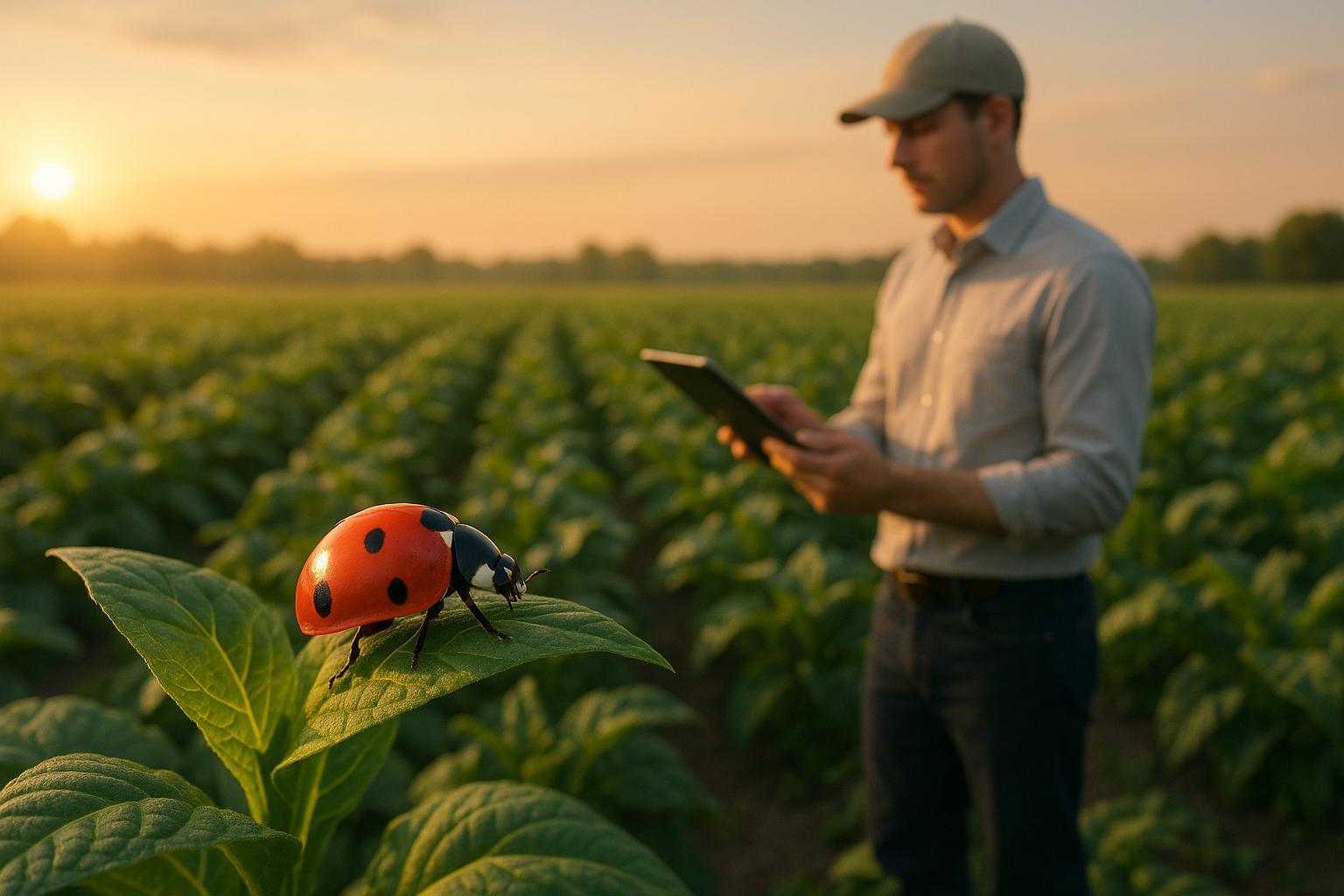
How to Measure Biological Pest Control Success
Learn effective methods to measure the success of biological pest control, from key strategies to monitoring tools and metrics.
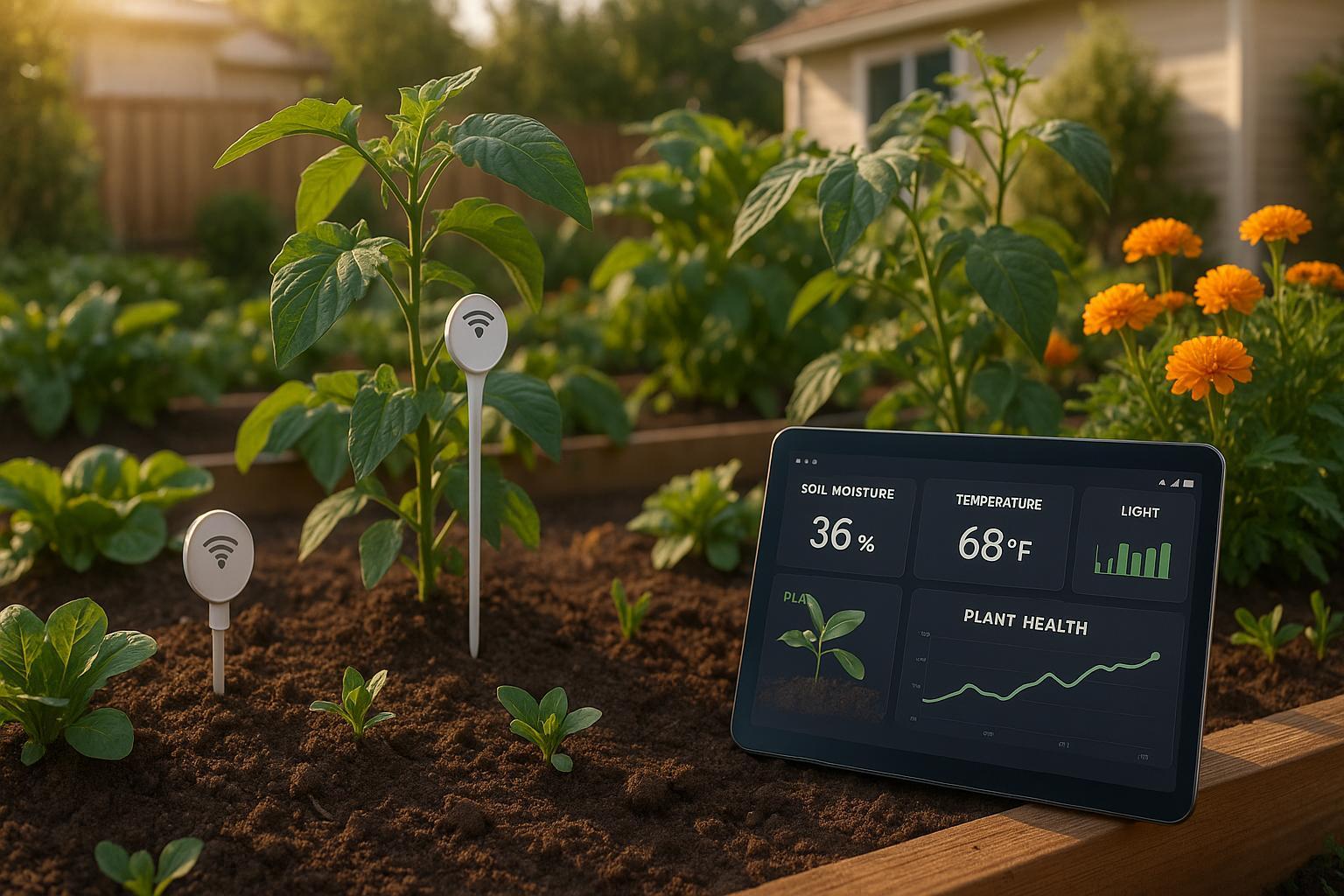
IoT Data Collection for Climate-Specific Gardening
Explore how IoT technology revolutionizes gardening by optimizing resource use, predicting diseases, and enhancing plant health for sustainable practices.

How to Use a Raised Bed Layout Planner: A Step-by-Step Guide
Learn how to design and optimize your raised bed garden using a layout planner. Discover the key factors to consider when choosing a raised bed layout planner and get tips on how to use it effectively.
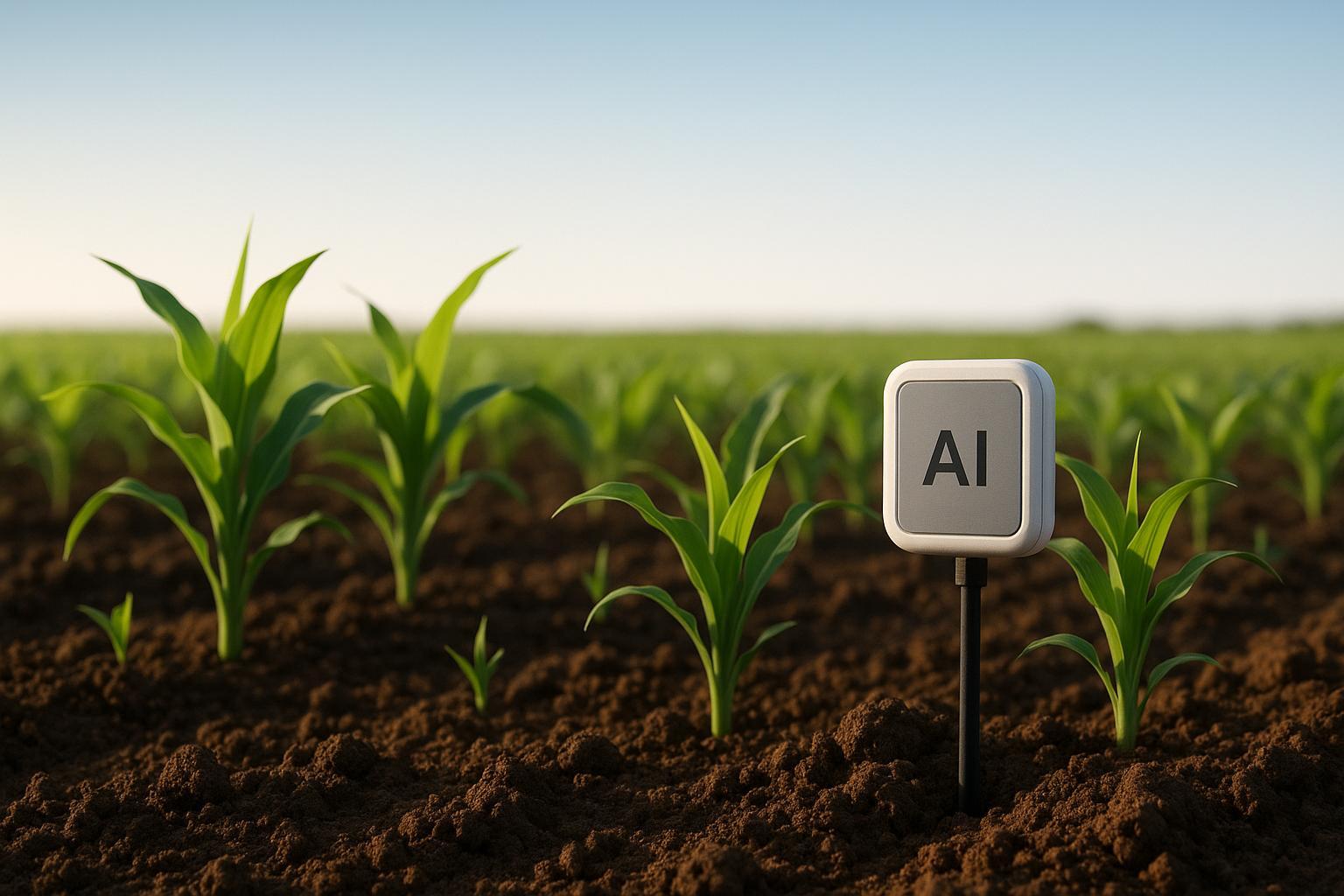
AI for Soil Water Retention Analysis
Explore how AI is revolutionizing soil water retention analysis, optimizing irrigation, and aiding in drought-resistant plant selection for sustainable gardening.

How AI Predicts Frost Risks for Seasonal Planting
AI enhances frost prediction for farmers, allowing for precise planting schedules and reduced crop losses through actionable insights.

How AI Apps Detect Garden Pests in Real Time
AI apps revolutionize pest management by providing instant identification and tailored solutions for garden pests, enhancing plant protection.